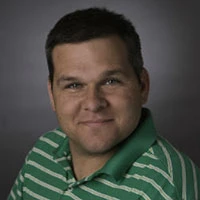
Wexford Plantation played renovation roulette in 2011 and took some proactive moves to standout in the Hilton Head, S.C., golf market.
Arnold Palmer’s firm redesigned the course, attaching a big name to a plantation featuring 460 home-sites. Practical reasoning also spurred the renovations. Water to irrigate golf courses isn’t as abundant in Hilton Head as some other places.
To eliminate overseeding, Wexford Plantation, which uses reclaimed water for irrigation, installed Zorro zoysiagrass on tees, fairways and approaches. Besides using less water, the zoysiagrass aids in producing the firm conditions members relish and offers striking aesthetics.
.jpg) |
“We like to see that ball roll out on that zoysia,” Wexford Plantation director of greens and grounds Chris Neff says. “It’s difficult to get to that point. There’s a fine line between lush and lean, I guess is a good word. We like that plant to be standing up so the ball is sitting up on that plant. Aesthetically zoysia is phenomenal compared to a Bermudagrass. We kind of look at those three factors, playability, health and that aesthetic value, your shot value when you are sitting up on the tee complex. We are not looking for PGA Tour-type conditions where you’re cutting your turf all the way down to nothing trying to keep the ball real tight. This membership is not looking for that. They want the full package of trying to find that good median.”
Neff has been around zoysiagrass long enough to know that challenges exist when trying to hit the trifecta. Before taking over the maintenance operations at Wexford Plantation in early 2014, Neff lived in Jacksonville, Fla., where he worked with the variety on tees during an extended stint as superintendent at Timuquana Country Club. He says he learned zoysiagrass requires less nitrogen and water, especially in a region which includes high salt levels in its irrigation water.
His first 18 months at Wexford Plantation has increased his knowledge of zoysiagrass, especially when it comes to disease management. “Obviously, we’re being a little more proactive when it comes to preventative fungicides,” he says. “We didn’t have to do that much in Florida on Bermudagrass. Now, I’m in a little bit more in the preventative side in making sure that we are doing some different things throughout the year. Now that I have been here a little longer, I know these weather patterns change and I try to get ahead of that weather pattern.”
Large patch represents the biggest disease concern on Wexford Plantation’s zoysiagrass, according to Neff. Fall, a soggy season in Hilton Head, is a critical time to get ahead of the disease.
“Basically what we have done over the last month in these rains, we try to get ahead of it a little bit with a brown patch application, but now we have really shifted into our large patch, zoysia patch, for the springtime,” Neff says. “Our soil temperatures are just getting to that right time where we will start our zoysia patch application, so the second week of October is where we will more than likely be at, and then we will comeback 28-30 days with a second application, and then obviously be ready for the spring with another application when we start greening up.”
Neff is learning more about zoysiagrass and large patch on almost a daily basis. His top assistant superintendent, Jaime Matthews, has worked at Wexford Plantation in 2010 and he serves as a valuable zoysiagrass resource at the facility. Neff leans on area vendors and superintendents in other areas where zoysiagrass and large patch are prevalent, and he often sends soil samples to research facilities.
Taking extra steps to ensure a tidy course is important because of a competitive landscape. Hilton Head-Blufton-Beaufort has the second fewest number of private course holes per person in the country, according to the National Golf Foundation’s 2015 “Golf Facilities in the U.S.” report. Wexford Plantation also competes with neighboring courses to secure high-profile events such as the Monday qualifier for the PGA Tour’s RBC Heritage and Division I college tournaments.
“It’s been very, very important to make sure we have that consistency 12 months out of a year,” Neff says.
Guy Cipriano is GCI’s assistant editor.
Latest from Golf Course Industry
- From the publisher’s pen: Conscientious of a bigger role
- Bernhard and Company partners with Laguna Golf Phuket
- Terre Blanche showcases environmental stewardship
- VIDEO: Introducing our December issue
- Bernhard and Company introduces Soil Scout
- Nu-Pipe donates to GCSAA Foundation’s Centennial Campaign
- GCSAA enhances golf course BMP tool
- Melrose leadership programs sending 18 to 2026 GCSAA Conference and Trade Show





